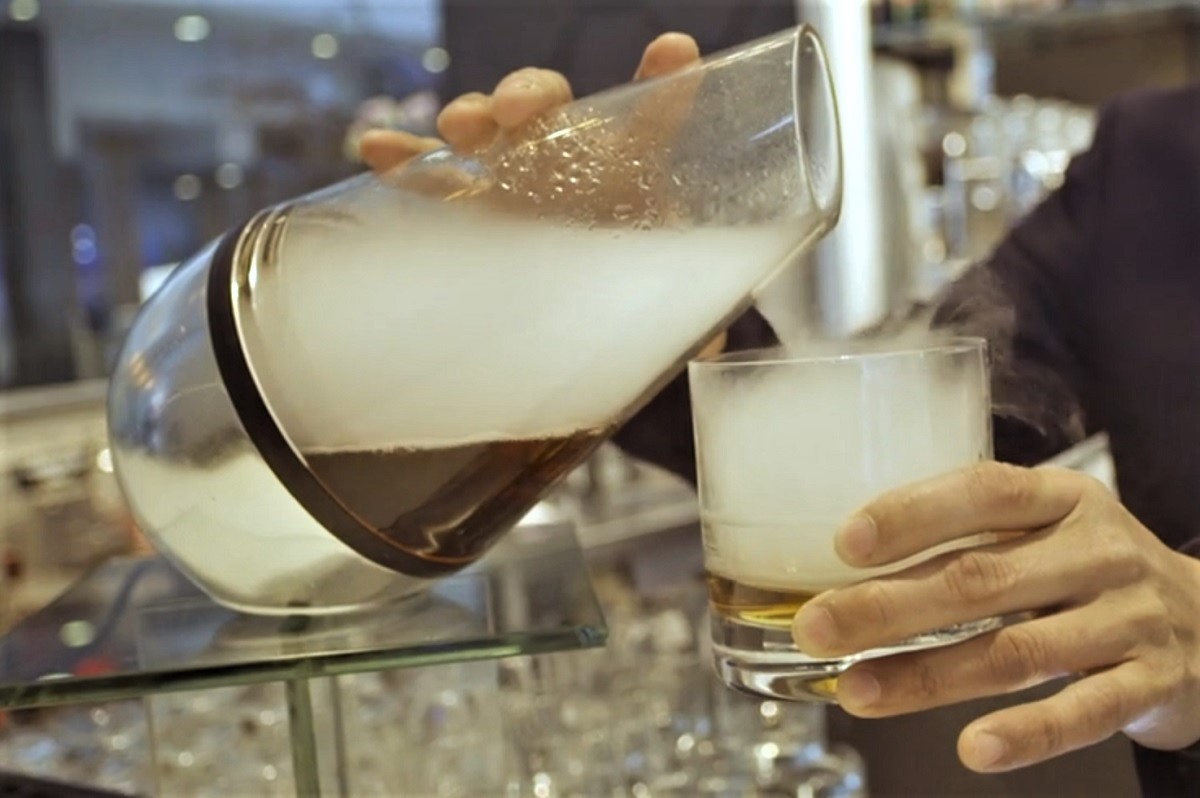Located in the academic playground between research institutions like Harvard and MIT, it’s no surprise that Cafe ArtScience uses science to fundamentally shape its culinary philosophy and menu. In fact, the restaurant and its Culture Lab frequently host free public seminars on the future of food, a topic that has generated a lot of conversation and research in recent years. Cafe ArtScience founder David Edwards says our sense of olfaction (the sense of smell), is especially critical to the restaurant’s approach toward food. For a little more context on how this all works, the molecules in our nose that grab onto scent molecules and signal a flavor or a scent to our brains are olfactory receptors. “Those receptors aren’t just in your nose: they’re in your heart and in your gut, too.” Edwards says that in a way, our whole bodies are sort of constantly engaged in sniffing out our surroundings—it makes sense that so much of Cafe ArtScience’s technology works to enhance this natural inclination.
At the restaurant, Edwards’ team plays around with scent and flavor by exposing guests to new sensory experiences. There’s something delightful about crafting and serving up a consistently perfect pasta dish or an unforgettable risotto, but there’s an additional layer to leaving guests with the sense, memory, and experience of foods that they haven’t actually ingested (or, in 2018, let’s be real: Instagrammed). At Cafe ArtScience, one of the most obvious and creative examples of this approach to dining can happen if a robot casually wafts a “cloud” of flavor above the cocktail you’re enjoying at the bar, or above the table you’re sharing with friends. You can then experience that cloud in your mouth or sip it with a special kind of straw to get the pure flavor of foods you’ve enjoyed countless times before: a taco, cinnamon rolls, or even cotton candy. That’s part of the magic of Cafe ArtScience: presenting guests with familiar flavors in some truly unfamiliar formats. “It’s hard to imagine having a taco and not actually holding it in your hand, so we’re really giving guests that sensory experience of very material things,” Edward explains. But because so many of those material experiences are so familiar and our sense of olfaction is so strong people immediately know that they’re being exposed to a cotton candy experience or a taco experience.
Explore Ever-Beguiling Boston
A lot of the magic happens at the bar, where bar director and partner Tenzin Samdo has created and is constantly innovating around a number of drinks that use special sensory experiences. Samdo achieves a sensory experiment by distilling the pure flavor of something (again, something familiar and relatively uncomplicated like a taco or cotton candy) into droplets that essentially float in the air—it sounds simple enough, but it’s one of those things that will have you thinking about the “how” for a long time once you’ve experienced the bar. Edwards says that this kind of pure, ephemeral experience has especially been integrated into the beverage menu, which he calls the primary spot for experimentation in the restaurant. One of the biggest hits? A traditional Old Fashioned that has a Negroni “floating over it,” essentially fusing together two very classic cocktails to create something completely new and undiscovered for guests.
The air garnish, Edwards says, is something the restaurant will be doing more and more over the next few months. Guests will also be able to use tumblers to hold drinks like tomato juice or a cocktail that can be placed on a coaster to create a special cloud of flavor above—in the course of drinking, a new infusion of flavor emerges. “It’s this truly magical sensory experience,” Edward says.












 @johno617
@johno617